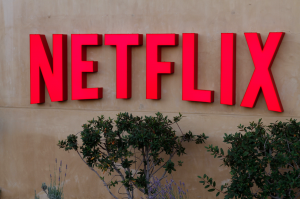
After more than 40 years of operation, DTVE is closing its doors and our website will no longer be updated daily. Thank you for all of your support.
Netflix puts the past behind it

Netflix produced investor-pleasing results this week, beating expectations and its own guidance in terms of revenue, operating income and membership. The company effectively buried the memory of Q2, when it lost close to a million subs and some began to question whether the creator of the SVOD market was entering a spiral of decline.
The streamer said its global subscriber number had reached 223 million, up 2.41 million on the previous quarter. It now forecasts 4.5 million net additions for Q4.
Those additions could be boosted not only by a strong content slate, with a raft of productions held up by COVID now coming on stream, but by the introduction of its much-publicised ad-supported tier and the introduction of ‘paid sharing’ initiatives including ‘profile transfer’ – where “non-paying members” can shift recommendations and other settings to a new account.
This will enable younger members of families about to leave home to continue as Netflix members with their existing profile, but it will also enable people who access Netflix via someone else’s account to build their own with their profile and recommendations intact. During the web call that accompanied the Q3 results, COO and chief product officer Greg Peters characterised this as working in tandem with the introduction of the ad-supported basic tier, so that people who have hitherto jumped on the back of someone else’s account to view Netflix are doubly incentivised to sign up for themselves.
The streamer has also introduced ‘extra member’, an option that enables account holders to create a sub-account to pay for the subscription of a friend or family member.
These initiatives to tackle the widespread phenomenon of account-sharing, coming on the back of testing various things in several markets, are seen as likely to have small but significant incremental impacts on subscriber growth.
The ad tier is seen in much the same way. Netflix’s leadership is being quite cautious in its approach and its estimation of the impact of its first foray into advertising. To counter the risk of churn among higher-paying subscribers, the streamer is making ads an option only for the basic tier, meaning that those looking for full HD or 4K quality will have to look elsewhere. Users will not be able to download content for offline viewing.
At the same time, Netflix is playing down any expectation that the introduction of ads will have a significant short-term impact on revenue, given that there is likely to be some substitution at the lower end with basic subs with no ads opting for the ad-supported tier, particularly as the cost-of-living crisis bites further.
In the longer term, Netflix is clearly hoping that advertising will have an impact both on subscriber numbers and on revenue. Industry expectations are that CPMs from the tier will be significantly higher than the industry average, but that is based on advertisers wanting to associate their brands with ‘quality’ Netflix content. Targeting – the other element in driving up CPMs – will initially be rather limited, with a focus on broad-based targeting by country and genre rather than individual user habits and personal profiling.
“We do have relatively basic targeting capabilities in terms of contextual targeting, genre, et cetera. But that’s sort of consistent with what we see with television as well, right?” said Peters on the call.
Part of this is to do with Netflix’s goal of getting the ad tier up and running quickly. In the future it aims to add new targeting capabilities and use its data in a more sophisticated way. However, it is likely to remain cognisant of the need not to alienate its subscribers.
Despite the caveats, Netflix does have ambitions for advertising. Reed Hastings’ record of assertions that linear TV is on its last legs comes into play here. On the call he cited Disney’s Bob Iger’s comments at a recent conference that “linear TV was going off a cliff”.
Advertisers, said Hastings, were “just being able to reach fewer people” with the crucial 18-49 demographic going off linear “even faster than the decline in pay TV”. SVOD advertising, therefore, will be given legs by the “collapse of linear TV as an advertising vehicle outside a few properties like sports”.
Hastings, bullishness on the fall of linear aside, Netflix still looks to be taking advertising step by step. One change the company has quietly made however is to drop its specific reporting on paid subscribers additions in future quarters. This is justified on the grounds that there are going to be many different layers of subscription in the future and what will really count is revenue and margin. It does however mark a striking change for a company that has until recently been seen as chasing subscribers at all costs.
Another sign that the original streamer is no longer engaged in a high-stakes landgrab at all costs, but is attempting to move towards the sustainable business model essential for a mature operation in a much more crowded market.




